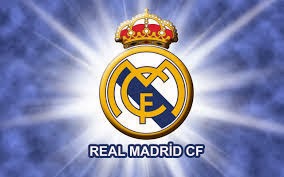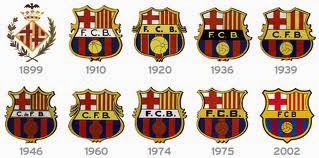Arsenal were
founded as Dial Square in 1886 by a group of workers employed by the Dial
Square workshop at the Royal Arsenal, an armaments factory in Woolwich, Kent
(formally part of the new County of London from 1889). They were led by a
Scotsman, David Danskin, who
purchased the club's first football, and Jack Humble. Among their number was
the former Nottingham Forest goalkeeper Fred Beardsley, who would later along
with Morris Bates obtain a set of red kits from his old club, thus giving
Arsenal the colours they still wear today.
Dial Square played their first match on 11 December 1886
against Eastern Wanderers on an open field on the Isle of Dogs, which they won
6–0. The club were renamed Royal Arsenal
soon after, reportedly on Christmas Day. Initially the club played on Plumstead Common, but soon sought
alternative homes, firstly the Sportsman Ground in Plumstead before moving to
the adjacent Manor Ground in 1888. Unhappy with the Manor Ground's poor
facilities, the club moved to the nearby Invicta
Ground in 1890, before returning to the Manor Ground three years later as the
Invicta Ground's rent proved too expensive.
During this period, Royal Arsenal started to win local
trophies, winning both the Kent Senior Cup and London Charity Cup in 1889–90
and the London Senior Cup in 1890–91; they also entered the FA Cup for the
first time in 1889–90. However, the gulf between Arsenal and the professional
sides from the North soon became apparent, and Arsenal faced the threat of
their amateur players being lured away by the money professional sides could
offer; after Derby County had played Arsenal in an FA Cup tie in 1891, they
attempted to sign two of Arsenal's amateur players on professional contracts. Royal Arsenal's move to professionalism in
1891 was frowned upon by many of the amateur southern clubs, and they were
banned from participating in local competitions by the London Football
Association. With friendlies and the FA
Cup the only matches available for Royal Arsenal, they attempted to set up a
southern equivalent of The Football League, but the move failed. The club changed its name to Woolwich Arsenal
in 1893 when it formed a limited liability company to raise capital to purchase
the Manor Ground. Woolwich Arsenal's
future looked bleak until the Football League came to their rescue by inviting
them to join in 1893. Arsenal were the first Southern club to enter the League,
initially joining the Second Division; in response, some of the club's amateur
players who rejected professionalism and wanted a workers' team to represent
just the Royal Arsenal, broke away to form a short-lived alternative side,
Royal Ordnance Factories.
Woolwich Arsenal (in dark shirts) playing Newcastle United
(in striped shirts) in an FA Cup semi-final – the club's first – at the Victoria Ground, Stoke on 31 March
1906; Newcastle won 2–0.
Woolwich Arsenal played in the Second Division for eleven
seasons, and generally occupied mid-table before the appointment of Harry
Bradshaw as manager in 1899; Bradshaw and his star signings, including
goalkeeper Jimmy Ashcroft (Arsenal's first England international) and captain
Jimmy Jackson, won promotion to the First Division in 1903–04. However,
Bradshaw moved on to Fulham in May 1904, before the Gunners had kicked a ball
in the top flight. Despite some strong performances in the FA Cup – the club
reached the semi-finals in 1905–06 and 1906–07 – Arsenal were never able to
challenge for the League title, only twice finishing above tenth place in the
First Division between 1904 and 1913.
The chief cause of this decline was the club's ongoing
financial problems; despite the boom in football during the early 20th century,
the club's geographic isolation, in the relatively under populated area of
Plumstead (then on the outskirts of urban London), meant attendances and thus
income were low. To stay afloat, Woolwich Arsenal were forced to sell their
star players (including Ashcroft, as well as Tim Coleman and Bert Freeman), and
slowly started to slip down the table, which compounded their financial
situation as crowds fell. By the end of the decade the average attendance at
Manor Ground was 11,000, a little over half of what it had been in 1904. The
club were close to bankruptcy, and in 1910 went into voluntary liquidation
before being bought out by a consortium of businessmen; the largest shareholder
amongst the new owners was the property magnate Sir Henry Norris, who was also
the chairman of Fulham.
The novel Making the Arsenal by Tony Attwood, (published by
First and Best, www.woolwicharsenal.co.uk) includes the argument that crowds at
Woolwich Arsenal were down in 1910 because of the closure of the torpedo
factory and its removal to the Clyde that year. It also suggests that after
Norris failed to get an agreement to amalgamation with Fulham he instead sought
to have Woolwich Arsenal play at Craven Cottage on alternative Saturdays. This
plan was abandoned when he was forced to agree that Woolwich Arsenal would stay
at the Manor Ground for at least two years from the summer of 1910. Norris was
acutely aware of the problems associated with Woolwich Arsenal's location, and
was desperate to improve the club's income. First, Norris tried to merge
Woolwich Arsenal with his other club, Fulham. When that was blocked by the
Football League, Norris abandoned the merger and looked to move the club
elsewhere, eventually picking a site in Highbury, north London. Despite
objections both from Woolwich-based fans and residents of Highbury, Norris
tenaciously saw the move through. He reportedly spent £125,000 ( Historic
Opportunity cost of that project is £12,530,000.00, Labour cost of that project
is £42,450,000.00, Economic cost of that project is £88,070,000.00[15]) on
building the new stadium, designed by Archibald Leitch, on a divinity college's
playing fields. Woolwich Arsenal moved there in the 1913 close season, having
finished bottom and relegated to the Second Division in 1912–13. They replaced
the "Woolwich" in their name with "The" in April 1914,
finally becoming plain "Arsenal" in November 1919, although the press
at the time continued to refer to them as "The Arsenal" and some
still do.
The club controversially rejoined the First Division in
1919, despite only finishing sixth in 1914–15, the last season of competitive
football before the First World War had intervened — although an error in the
calculation of goal average meant Arsenal had actually finished fifth, an error
which was corrected by the Football League in 1975. The First Division was
being expanded from 20 teams to 22, and the two new entrants were elected at an
AGM of the Football League. One of the extra places was given to Chelsea, who
had finished 19th in the First Division and thus had been already relegated.
The other spot could have gone to 20th-placed Tottenham Hotspur (also
relegated), or to Barnsley or Wolves, who had finished third and fourth in the
Second Division respectively.
Instead, the League decided to promote sixth-placed Arsenal,
for reasons of history over merit; Norris argued that Arsenal be promoted for
their "long service to league football", having been the first League
club from the South. The League board
agreed; they voted eighteen votes to eight to promote Arsenal ahead of their
local rivals Tottenham Hotspur, which
has fuelled the long-standing enmity between the two clubs. If "long
service to league football" was the criterion for promoting Arsenal
instead of Tottenham then Wolves, who finished two points ahead of Arsenal and
were founder members of the Football League, would appear to have a stronger
claim. It has been alleged that this was due to backroom deals or even outright
bribery by Sir Henry Norris, colluding with his friend John McKenna, the
chairman of Liverpool and the Football League, who recommended Arsenal's
promotion at the AGM.
No conclusive proof of wrongdoing has come to light, though
other aspects of Norris's financial dealings unrelated to the promotion
controversy have fuelled speculation on the matter; Norris resigned as chairman
and left the club in 1929, having been found guilty by the Football Association
of financial irregularities; he was found to have misused his expenses account,
and to have pocketed the proceeds of the sale of the Arsenal team bus.
Regardless of the circumstances of their promotion in 1919, Arsenal have
remained in the top division since then, and as a result hold the English
record for the longest unbroken stretch of top-flight football.
There appear to be no extant records of the meetings which
elected Arsenal to the First Division in 1919, however the book Making the
Arsenal proposes a different reason for their election in that year. The site
argues that the match fixing issues of the final year of football before the
war (1914–15) were used by Norris as a weapon in his battle to get Arsenal
promoted. He demanded that Liverpool and Manchester United (who had been found
guilty of match fixing) be punished by relegation or expulsion, and threatened
to organise a breakaway from the league by Midlands and southern clubs if
nothing was done. To placate him the League offered Arsenal a place in the
First Division.
Arsenal's squad for
the 1920–21 season, the club's best under Leslie Knighton, finishing ninth in
the First Division.
The move to Highbury brought about much larger crowds; the
average attendance in Arsenal's first season at the new ground was 23,000
(compared to 11,000 at the Manor Ground) and rose further after promotion in
1919, finally warding off the spectre of financial ruin. However, Arsenal's
return to the First Division was not immediately successful. Under Leslie
Knighton, the club never finished better than ninth, and in 1923–24 came close
to returning to the Second Division, finishing 19th and only a point clear of
the relegation zone. Arsenal did no better the following season, finishing 20th
(although paradoxically the club were a lot safer this time, being seven points
clear of the relegation places), which was the last straw for Norris; he fired Knighton in May 1925, and appointed the
Huddersfield




